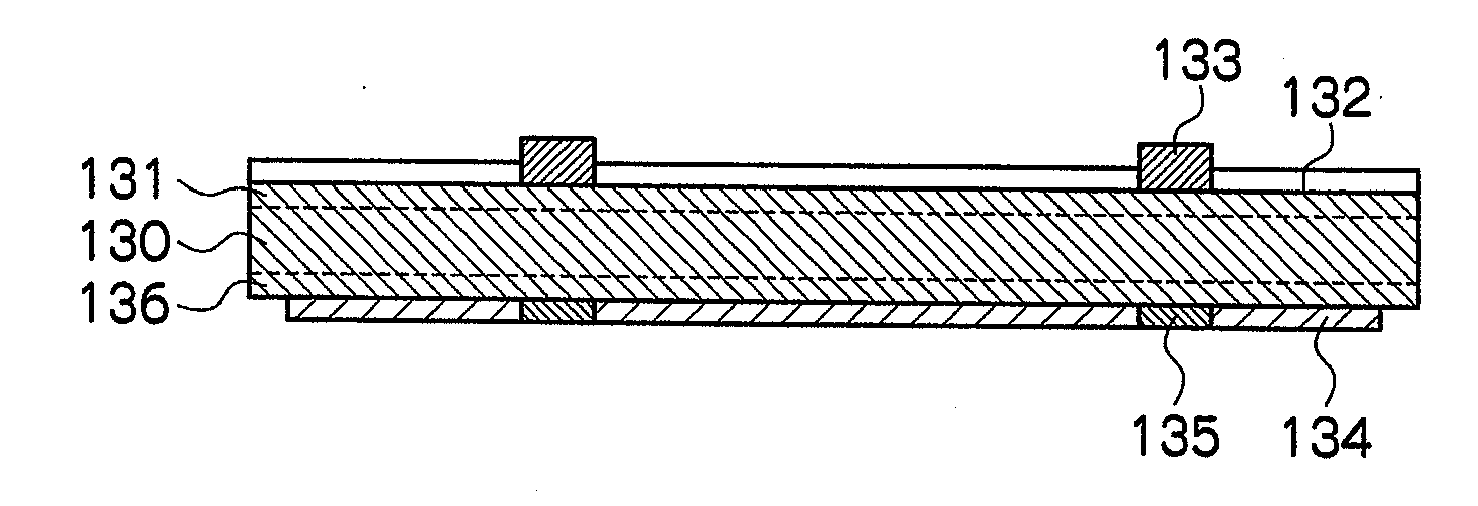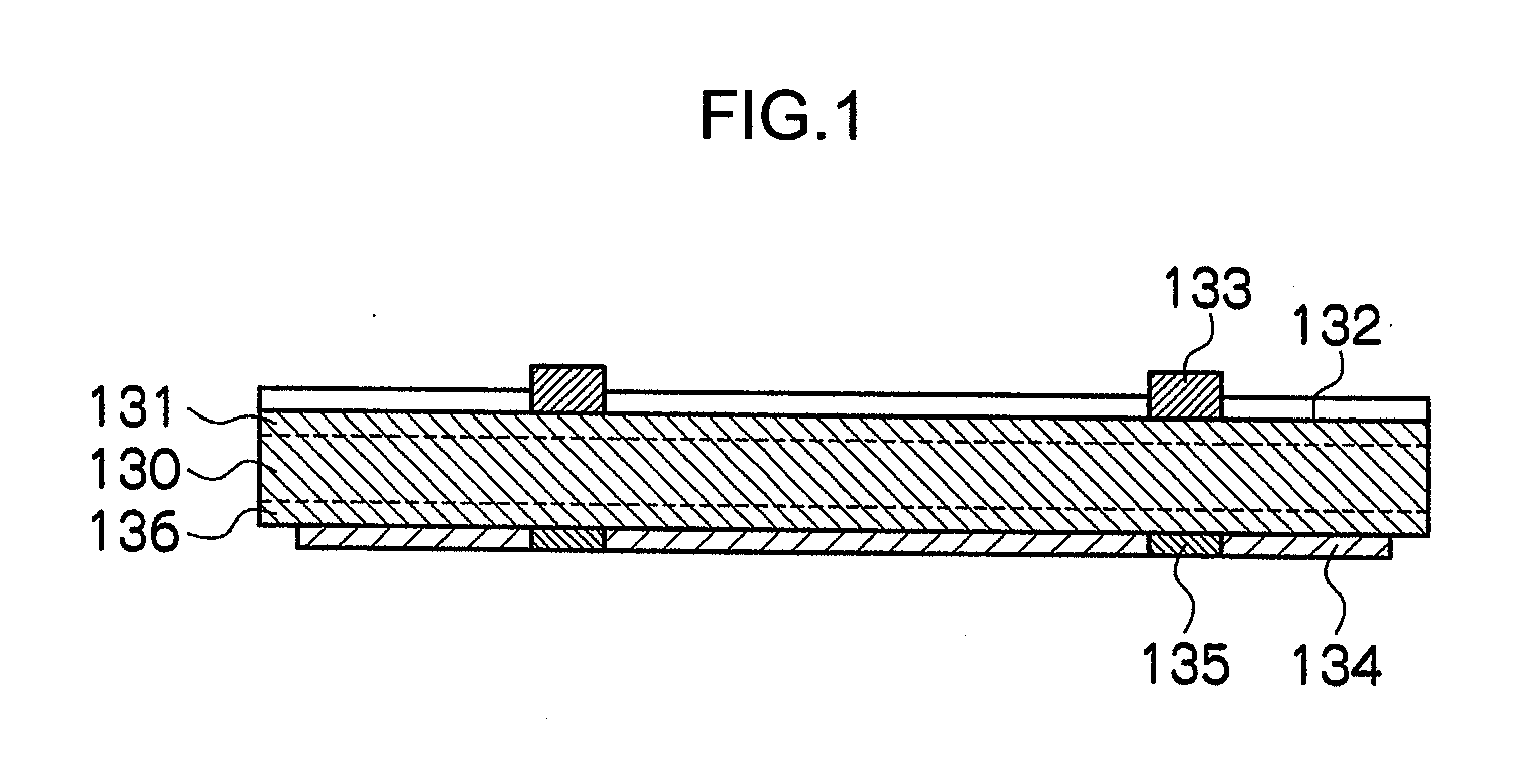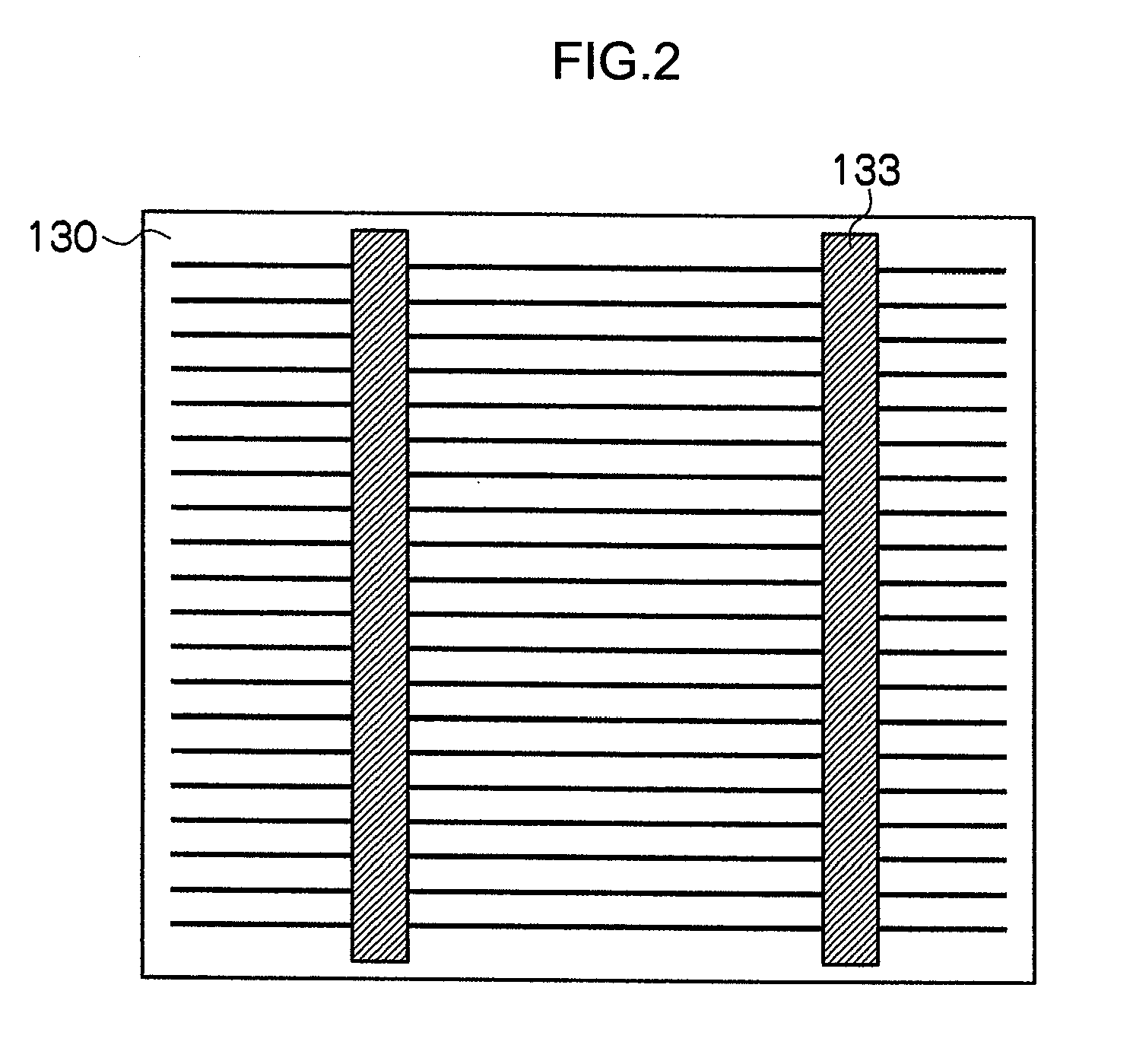Paste composition for electrode and photovoltaic cell
- Summary
- Abstract
- Description
- Claims
- Application Information
AI Technical Summary
Benefits of technology
Problems solved by technology
Method used
Image
Examples
example 1
[0162](a) Preparation of Paste Composition for Electrode
[0163]Glass including 10 parts of vanadium oxide (V2O5), 29.6 parts of phosphorous oxide (P2O5), 10.4 parts of barium oxide (BaO), 10 parts of molybdenum oxide (MoO3), 30 parts of tungsten oxide (WO3), and 10 parts of potassium oxide (K2O) (hereinafter abbreviated as “K41” in some cases) was prepared. The glass K41 obtained had a softening point of 554° C. and a crystallization temperature of higher than 600° C.
[0164]By using the glass K41 obtained, glass particles having a particle diameter (D50%) of 1.7 μm were obtained.
[0165]39.2 parts of the copper particles (purity 99.9%, particle diameter (D50%) 1.5 μm, manufactured by Mitsui Mining & Smelting Co., Ltd.), 45.9 parts of the silver particles (particle diameter (D50%) 3 μm, a high-purity chemical product manufactured by Sigma-Aldrich Corporation), 1.7 parts of glass particles (K41), and 13.2 parts of a butyl carbitol acetate (BCA) solution including 4% of ethyl cellulose (EC...
examples 2 to 8
[0170]In the same manner as in Example 1, except that the particle diameter (D50%) and the content of the copper particles, the particle diameter (D50%) and the content of the silver particles, the type and the content of the glass particles, and the content of the butyl carbitol acetate (BCA) solution including 4% of ethyl cellulose (EC) were changed as shown in Table 1 in Example 1, paste compositions 2 to 8 for an electrode were prepared.
[0171]Further, the glass particles (AY1) included 45 parts of vanadium oxide (V2O5), 24.2 parts of phosphorous oxide (P2O5), 20.8 parts of barium oxide (BaO), 5 parts of antimony oxide (Sb2O3), and 5 parts of tungsten oxide (WO3), and had a particle diameter (D50%) of 1.7 μm. Further, the glass had a softening point of 492° C. and a crystallization temperature of higher than 600° C.
[0172]In the same manner as in Example 1, except that the temperature for heating treatment and the treatment time were changed as shown in Table 1, using the paste co...
PUM
 Login to View More
Login to View More Abstract
Description
Claims
Application Information
 Login to View More
Login to View More - R&D
- Intellectual Property
- Life Sciences
- Materials
- Tech Scout
- Unparalleled Data Quality
- Higher Quality Content
- 60% Fewer Hallucinations
Browse by: Latest US Patents, China's latest patents, Technical Efficacy Thesaurus, Application Domain, Technology Topic, Popular Technical Reports.
© 2025 PatSnap. All rights reserved.Legal|Privacy policy|Modern Slavery Act Transparency Statement|Sitemap|About US| Contact US: help@patsnap.com



